The story of the house of kirk, published 1914


The story of the house of kirk, published 1914


This book was published in 1914 by S. Kirk & Son telling the story of the first 99 years of the company. It is a short read but it provides so much of the history of Kirk that you just will not find any where else.

Size is 6.5 x 4.5

Interior has two fly pages, then these two pages.

Samuel Kirk
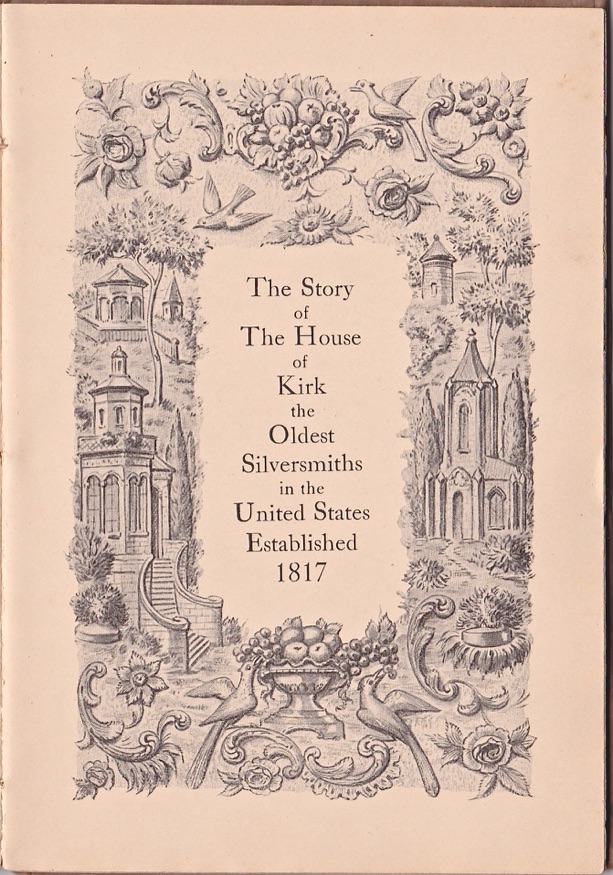
A reprint of an earlier piece of Kirk material. In 1887 it was discovered that S. KIRK & Son was founded in 1815, not 1817 as this piece declares.

An interesting note... when S. Kirk started his business in 1815, he bought a ledger from his neighbor F. Lucas. Here in 1914, 99 years later S. Kirk & Son is still using LUCAS as its supplier and printer.
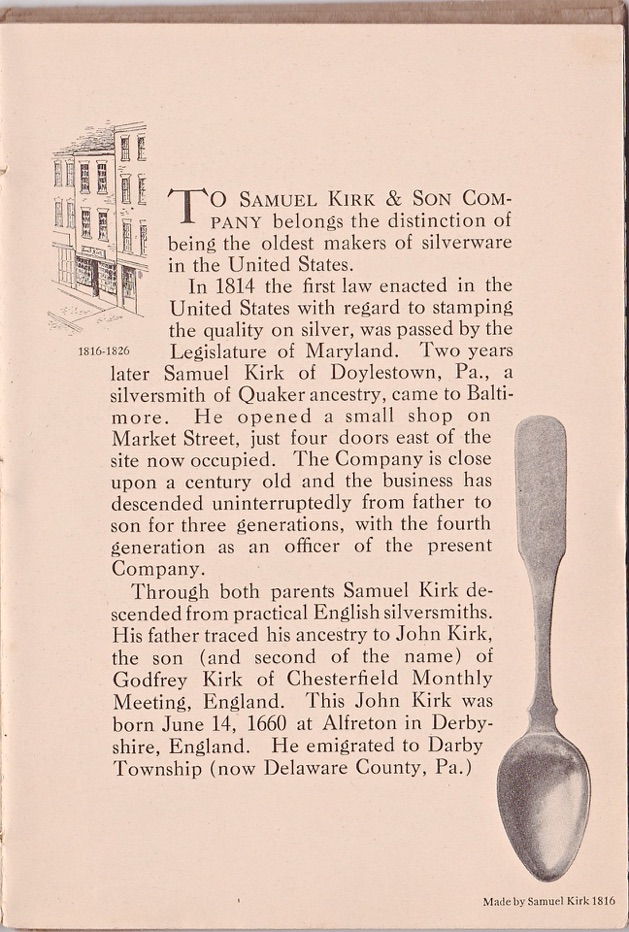

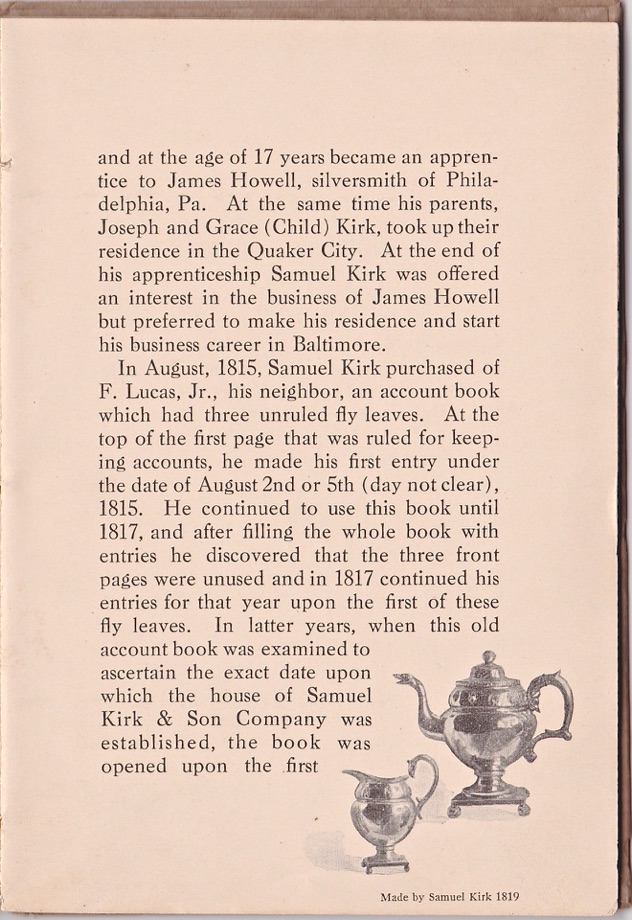
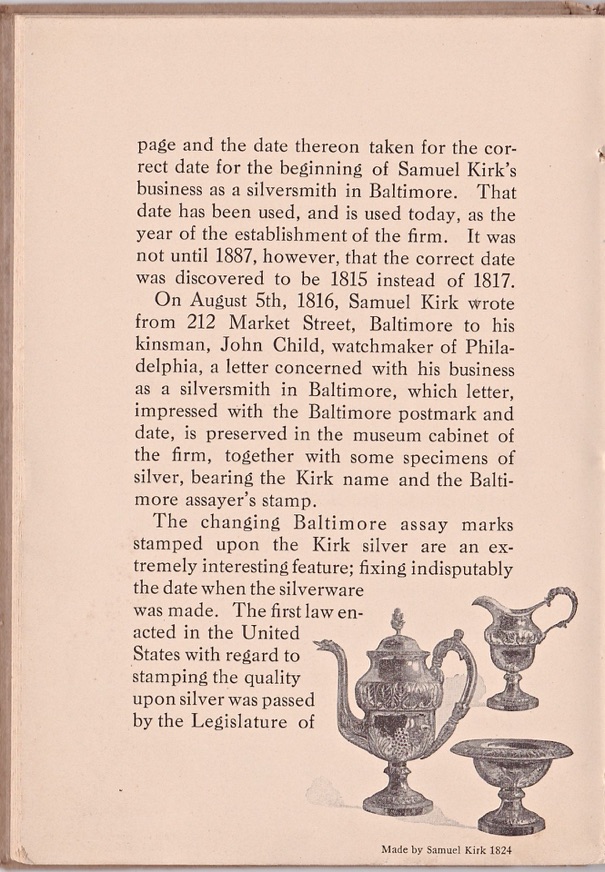



This page is blank and not reproduced in full size.

HENRY CHILD KIRK
(THE SON IN S. KIRK AND SON)
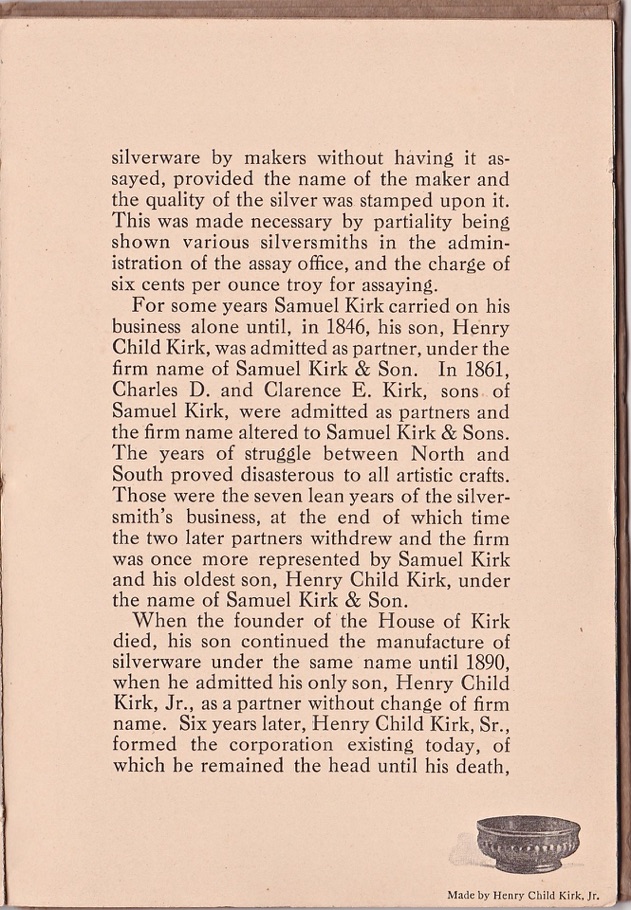
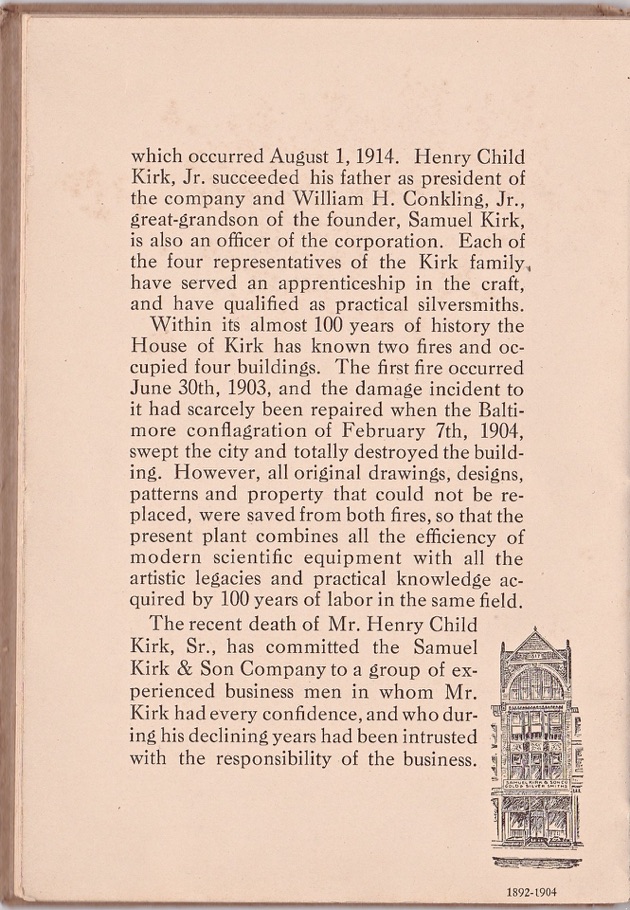
The great Baltimore fire of 1904 burned the S. Kirk & Son building shown above. Below, the new building of 1905.

The pages below show the hallmarks and date marks used on the silver of S. Kirk & Son. Some marks are similar so pay close attention to the marks as subtle differences can mean the difference of decades.
The OUNCE marks given on the following pages are TROY weights and not the standard ounces we in the US use.
10.15 or 1015 refers to 10.15 out of 12 ounces TROY. 11 OZ is 11 out of 12 ounces TROY
10.15 is 84.58 percent pure and 11 OZ is 91.66 pure vs 92.5 for Sterling Silver
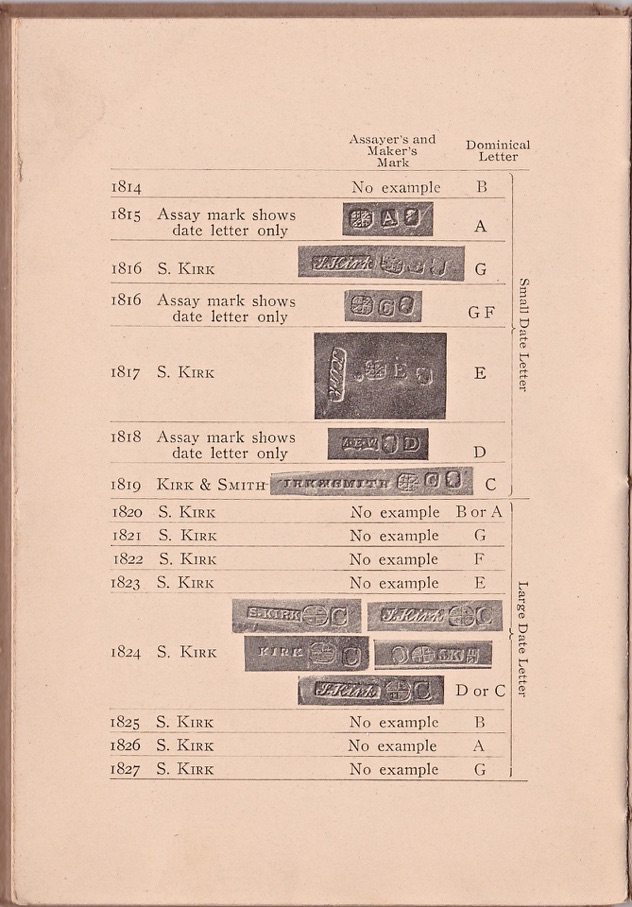
The “missing” examples of the assay marks that were not known in 1914 have been found and are documented by Patrick Duggan and can be found at
imperialhalfbushel.com/BaltimoreAssayMarks.htm
The early assay marks have a rounded, stylized version of the flag of Maryland, as seen below.



The book continues to reference Assay marks after 1830.. but that was the last year of the mark.
PLEASE READ... WE SOMETIMES SEE PIECES OF COIN SILVER WITH THE 10.15 MARK OR 11OZ. MARK ... ALSO MARKED INCORRECTLY WITH A STERLING MARK.
WHY ?
SOME DEALERS AND JEWELERS WOULD LATER TAKE A DIE AND STRIKE STERLING ON TO PIECES TO ADD TO THE VALUE. THIS WAS ALSO SOMETIMES EASIER THAN EXPLAINING WHAT COIN SILVER WAS TO A CUSTOMER IN 1960... SO OUT CAME THE STERLING DIE AND HAMMER.
11 OZ IS CLOSE TO STERLING BUT NOT QUITE THERE.

The use of the name S. Kirk & Sons (plural) only applies to the 1861-68 period) Of note here... in the 1868-1890 section showing the 925/1000 mark... this did not appear until the 1880s. Kirk was making COIN silver exclusively until the mid 1880s. When they did start making better silver the mark was the 925/1000 mark (not the word STERLING)
Also of great importance.. notice the slightly script hallmark at the bottom of the page above. This is a great way to date a piece of coin silver from this period (1890-1896) the last of the coin silver was produced in 1896.
BELOW, notice that they started showing the different marks on FLATWARE and HOLLOW WARE. 1896 brought the “Co.” mark to the hallmark.

The move to all 925/1000 silver in 1896 along with the Co. mark. The STERLING mark would wait until 1914.
THE S. KIRK & SON CO. MARK WOULD BE USED
FROM 1896 TO 1924.
IN 1924 THE MARK WAS CHANGED TO
S. KIRK & SON INC.
1932 BROUGHT THE RETURN OF THE EARLIER MARK
S. KIRK & SON WHICH WAS USED UNTIL 1979.
(any silver marked STERLING and S. Kirk & Son will be from 1932 or later)
In 1979, S. Kirk & Son was bought by The Stieff Company creating
The Kirk Stieff Company
The STORY OF THE HOUSE OF KIRK
continues after these brief advertisements.
These ads help defray the cost of producing this free site for others interested in Sterling Silver
